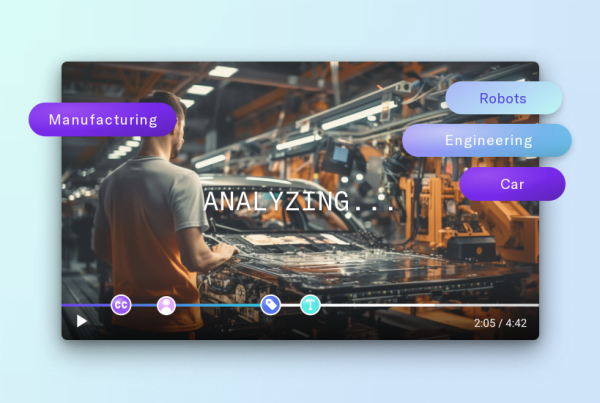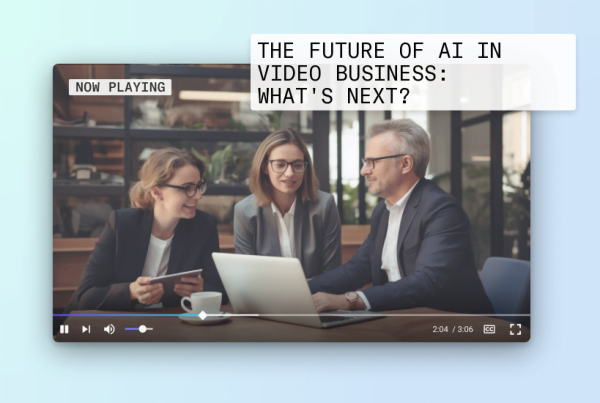If you’re reading this, I certainly don’t have to convince you that video content for your site is hugely valuable. You already know that video content — licensed or original — is great for engagement, time on site, conversion, brand credibility and authority, and PR. If you make your own content, it’s a huge boost to your branded content game, and opens the door to all kinds of partnership opportunities — to say nothing about its ability to amplify your brand voice.
The Challenge
As true as that is, we have to face a brutal reality. Your video content isn’t as special as you think it is — even if it really is the best content out there. While audiences do crave video content, they also have more options for consuming it than ever before. Not too long ago, the value of video was based on scarcity. Only a few could afford to create content, and there weren’t as many places to watch. Now that everyone can create video for every imaginable platform, it behaves more like a commodity. Unless you’re in the streaming business, your content is more likely an additive part of your overall brand experience, not the primary consumer product itself.
Similarly, in the past, how we defined audiences was simple. Young moms who like food, young men who like gaming, and so on. While that is still part of the mix, our view of audiences needs to include what an audience research colleague of mine calls a person’s “need state.” How they consume, where they consume, when they consume — it’s all up for grabs. Defining that need and how you solve for it is the key.
The Situation
What this means is that growing your audience, brand, and ad revenue with video requires some strategy. Let’s go through the basics:
Know your audience
Like any challenge in running a content-forward site or business, you should always start with your audience. What viewers need and why are two questions you should be asking all the time, but especially when it comes to building and deploying video strategy.
What is the utility of this video?
To that end, each video — especially short-form video — typically has a primary purpose: to entertain, to inform, to delight, to provoke, and so on. Ask yourself these two basic questions: How should an audience watch a video — on which device, embedded in an article, within a playlist, etc? And second, why should they watch this video? Bottom line, it’s hard to evaluate the performance of your video – views, watch time, etc – if you aren’t measuring it against the context by which they consume.
Set expectations
With nothing but choice, your audiences’ attention deserves some respect. They’ve landed on your site, so get them what they want quickly. Help them see the value of your video with direct, catchy titles and well-designed thumbnails. If you have the ability to create subheadings or present metadata around the video asset, give them a reason or two why watching it will be worth their while. Keep it brief, focused, and enticing.
Don’t do video for video’s sake
Video pays off, especially when you treat it like the star it is. At the risk of upsetting SEO experts, please don’t just stick video players on every page just because it’s good for search. If they landed on a page about how to make a recipe — make the embedded video is addictive to that recipe, not just some tangential or even unrelated thing. If the video is the primary content, don’t bury it reams of SEO-friendly text.
Work with your product team (or think like a product person if you don’t have one)
A great video platform can be made greater when the teams responsible for building and maintaining your site understand your role as a programmer. Take time to work with them to help them understand the audience need you’re trying to solve. If you are the product person, do your best to create the best possible experience for the audience. Lastly, make sure you’re leveraging your video platform solution. Take time to understand how they can best work for your site.
Test and Iterate
Set up some objectives, and read all the available data. A/B test different videos, player placement on the page, headlines, thumbnails. Be prepared to pivot.
Putting this into practice, I’ll share a simple example, and one frankly most representative of programming blunders.
Two videos: a tabletop recipe video for thin crust pizza, and a mini-doc about the food of Naples, Italy. While perusing for recipes or learning how to make something, audiences are more likely to watch a recipe video on a mobile device. They may be in the kitchen, or even at the grocery store. Whatever the case, they want information, quickly.
That mini-doc about the food of a certain region? Probably best used in a more lean-back experience, or embedded in a story about the joys of traveling in said region. They’re open to longer content because they’re already natively curious. They’ve taken time to explore.
The headlines, the editorial around the video, even how you promote the video on your site should consider what you think the consumer wants out of the experience.
The Breakdown
There’s a reason video is considered premium. When it’s done right, the payoff is huge. But like anything premium, you have to treat it differently and with more care than other elements of your content plan. Employing the strategies listed above, along with a willingness to test and iterate all the time, you should start seeing your video library pay off in all the right ways.
About the Author:
Craig Parks is a media executive with over 20 years experience creating innovative and successful content experiences for audiences, brands, and emerging platforms. Passionate about innovation, storytelling, and mentorship, he has helped transform and grow a wide range of media brands, including Comcast’s Watchable OTT platform, IFCtv, Pivot TV, Jukin Media, ABC Family, and MTV Networks. He is a board member of One Day Immersion, a non-profit dedicated to connecting tomorrow’s media leaders with today’s industry professionals.




